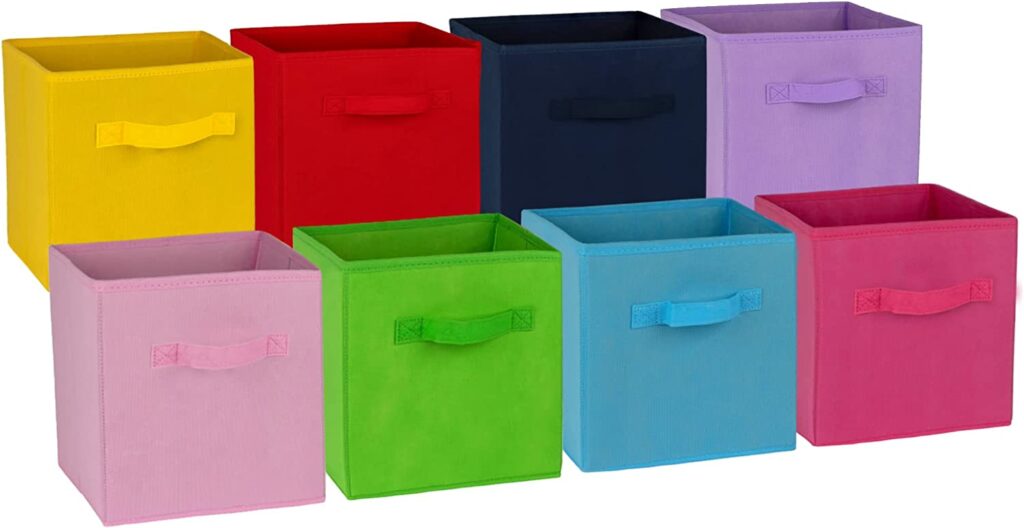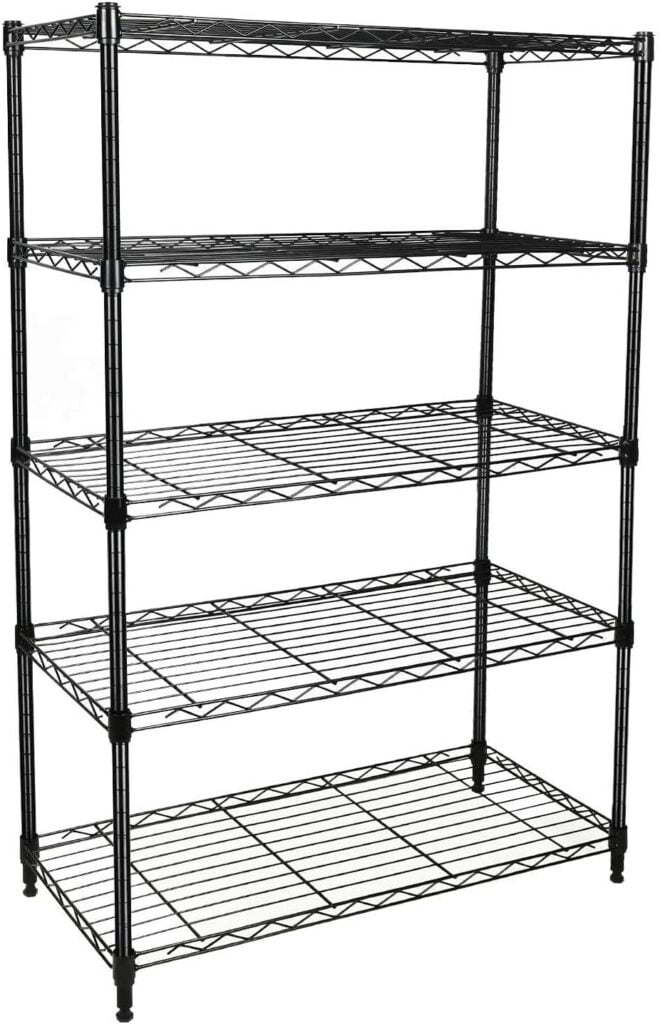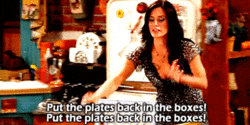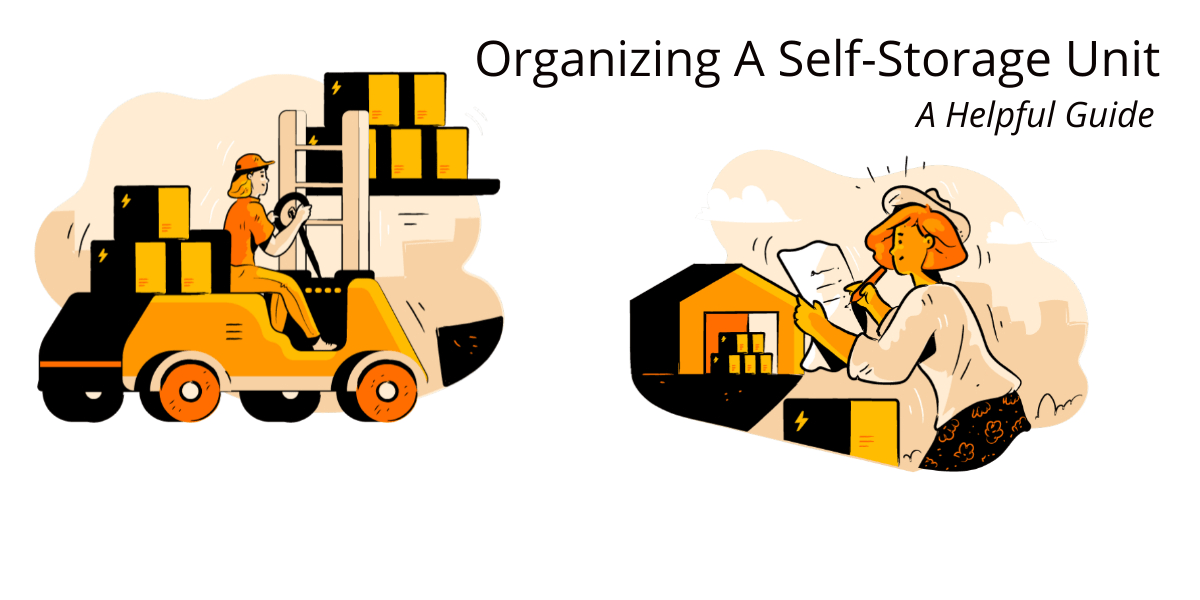15 Tips for Storage Unit Organization for Frequent Access
Storage Unit Organization
The storage unit is now filled with clutter, making finding what you’re looking for difficult.
Keeping things organized can be challenging, whether your space is large or small.
However, there are some steps that anyone can take to make the most of their time and money spent on self-storage units by organizing everything efficiently before they start packing up.
The benefits of using a storage unit organization
The benefits of using a storage unit for organizing items are numerous.
- It helps to free up space at home or in the office, reducing stress and the hassle associated with clutter.
- Proper organization makes it much easier to find items as needed.
- Stacking boxes and items rarely used towards the back of the unit makes accessing those needed more frequently easier.
- Having an itemized list of which items are stored in the unit makes it easier to check things off and ensure everything is accounted for.
- Organizing the unit by item type, weight, and bulkiness can help to maximize the space and make the most of it.
How to organize a storage unit
Organizing a storage unit can be difficult, but ensuring everything is stored in the space is important.
This article offers advice for organizing your self-storage unit and includes how-to guides on different aspects of storage.
- Strategize the layout. Before loading items into the storage unit, map exactly where each category should go.
- Group items into categories. Place similar items together in the storage unit, such as clothes in one corner and documents in another.
- Label all boxes. Clearly label all four sides of each box with a list of contents before putting it into the storage unit.
- Prioritize items by location. Keep items you need to access more often in the front of the storage unit and those needed less often in the back.
- Place larger items closer to the walls. Store the larger, bulkier items near the walls and smaller items in front of them.
- Create an aisle down the middle. For larger storage units, create a walkway in the center to easily access the items in the back.
- Consider vertical storage. Utilize shelving to free up space and prevent smaller items from cluttering the floor.
- Make uniform boxes. Use consistent box sizes to make it easier to stack and store items.
- Note items that need to be accessed. Make a list of items that may frequently be needed from the storage unit, such as seasonal clothing and important documents.

15 tips for storage room organization for frequent access
If you are looking for a way to access your belongings without hassle, you should consider organizing your storage units for frequent access.
This is a great way to save time and ensure that your items are easy to find, no matter how often you access your storage unit.
Here are 15 tips to help you effectively organize your storage unit for frequent access.
1. Create an inventory
A storage unit inventory is a comprehensive list of all the items stored in a unit, which can help with insurance purposes in a natural disaster.
Also, it helps to find items if needed easily.
It is important to update the list each time an item is added or removed.
It should include photos of serial numbers and model numbers, as well as a brief description of the item, any damage, and the relative monetary value if it is an expensive item.
The storage unit should also be mapped out, and a master inventory list should be kept to remember what and where items are placed.
Creating an inventory of a storage room for frequent access is a great way to stay organized and save time when navigating your unit.
Here are the steps you should follow:
- Make a list of the contents of each box and then number each box. Take time to write down every detail, so you can easily find the items later.
- Create a master list. On this list, include the box number, the room it came from, and the contents of the box. If you’re tech-savvy, you can create an Excel spreadsheet or Word document to store this information.
- Label each box on the top and at least one side with a unique box number, the room it came from, and the box’s contents.
- Place a special mark on boxes you may need to access at some point during storage, and remember to put them in your storage unit last.
- Once you have labeled all your boxes, double-check to ensure your master list is up-to-date and accurate.
2. Label everything
Labeling everything as a storage unit for frequent access because t must save time and stress when trying to find an item.
Without labels, it can be difficult to remember which box holds what, which leads to a lot of unnecessary effort when trying to find what you are looking for.
Labeling each box with a list of its contents, a box number, the room it came from, and other important details can help ensure you can quickly and easily access the items you need with minimal effort.
Labels also help to keep your storage unit organized so your items are easy to find.
Without labels, you may search through piles of boxes and bins, trying to remember what you put where.
Labeling everything up front is a small investment that will pay off in the long run.

3. Color-coordinate bins
Color-coordinating your containers when organizing a storage unit can make it easier to identify the bins’ contents quickly.
Using the same color for similar-sized plastic bins will allow you to stack items easily and not have to worry about the bins toppling over.
Color coding will also allow you to quickly find the box or bin you’re looking for without searching through all of them.
Additionally, using labels and writing down a detailed storage inventory will help you to locate and retrieve items easily.
4. Use clear containers
Clear bins are more convenient, making storing items easier for people.
Clear containers can be used around the home, including organizing closets, sorting jewelry, or placing food inside refrigerators.
You can organize your storage space efficiently by using clear containers.
Using opaque cardboard boxes is more affordable, but plastic bins make it easier to see inside a container without digging through it.
Additionally, if you store items in the same bin for a long time and get damaged from being moved around too much, something else happens during that period.
You will have one less thing on your plate when organizing because the contents of that specific bin all came from one place instead of being spread out.
5. Invest in pegboard shelving
Pegboard shelving is a great way to maximize the space in your storage unit and organize it for frequent access.
It consists of a board with hooks and pegs that you can attach to the wall of your storage unit.
You can hang items such as boxes, baskets, and tools and also use them to store large or oddly shaped items that won’t fit in boxes.
Pegboard shelving helps you make the most of the vertical space in your unit, so you can store more items without compromising stability.
It also allows you to create clear pathways and leave room for easier access.
Pegboard shelving can help you organize your storage unit efficiently and make accessing your items easier, especially if you frequently access the space.
6. Make the most of hooks
Utility hooks are designed for brooms, mops, and dustpans.
They can be hung on the wall or placed in a command station with a bulletin board, chalkboard, key hook, and magnet board.
If you lose something important like your keys, they will know where to find them.
Hooks can be a great way to maximize the use of a self-storage unit if you need to access items frequently.
Here are some tips to make the most of the hooks in your unit:
- Install hooks to the walls or ceiling of your unit. This will help create more storage space and make it easier to access items without moving around large items.
- Use the hooks to hang bicycles, garden tools, and other items with handles. This will help keep them out of the way and make them more easily accessible.
- Hang large items like ladders, tents, and kayaks from the ceiling. This will help maximize the use of space in the unit.
- Use bungee cords to attach items to the wall or ceiling for a more secure hold. This will help prevent items from falling and help keep them in place.
- Hang clothes and other items that need to stay wrinkle-free. This will help free up space in boxes and keep the items easily accessible.
By following these steps, you can make the most of the hooks in your self-storage unit and maximize the use of the space.
This will help make it easier to access items when needed and help keep your unit organized.

7. Don’t forget wire shelving
Wire shelving is a shelving unit made of sturdy, durable metal wire. It is designed to maximize the vertical space of a storage unit and provide support for boxes and other items.
Wire shelving is lightweight and easy to assemble, making it a great choice for those needing frequent storage unit access.
It allows you to organize your items efficiently, with pathways created between shelves to access boxes near the bottom easily.
The shelves can be adjusted to different heights to accommodate different-sized items, and the open design of the wire shelving allows you to see labels so you can quickly locate the items you need.
Using wire shelving, you can maximize the space in your storage unit, safely stack items, and easily access the items you need.
8. Create a paper-filing system
A paper-filing system is a great way to keep track of items stored in a storage unit.
It involves writing down the contents of each box along with the box number on paper and can be further simplified by using tools to dictate text instead of writing.
Labels can be printed from your inventory to create custom box labels.
A storage unit map can be created to plan a pathway throughout the storage unit so that it’s easier to access what you need when necessary.
Labels should be written with a Sharpie and laminated to ensure they don’t wipe off.
This system makes filing a claim with a storage unit insurance company easier, as it is easier to tell what is missing.
9. Group holiday items
It is important to group holiday items together when organizing your storage unit to minimize the time spent searching for items.
By packing items that fit within general categories like winter clothes, tools and supplies for a hobby, and seasonal holiday decor, you can access them without an issue.
This will save you a lot of time and energy in the future instead of tearing your storage unit apart to find something like boots if everything is not properly labeled and organized.

10. Store China in special containers
If you don’t have a china cabinet, find a safe place to store your dishes.
China storage containers are perfect for this purpose because they can be stored in low-traffic areas and high up on shelves.
Clear containers make it easy to organize the storage space by minimizing visual clutter.
Organizing a self-storage unit for frequent access in China requires careful planning and packing strategies.
Here are the steps you should take to make the most of your storage unit:
- Label each box on the top and at least one side with a unique box number, the room it came from, and the box’s contents. Make sure to include all of the items in the box and any details about the items (e.g., size, weight, type, etc.).
- Place fragile items, such as expensive china, into bubble wrap before packing them into the box.
- Wrap each dinner plate in bubble wrap and place it into the box. Make sure to place the plates upright, not flat.
- Place a piece of bubble wrap or packing paper between each plate to prevent them from chipping or breaking while in storage.
- Place a layer of bubble wrap or packing paper at the bottom and on the plates. This will help add some cushioning and protect them against bumps or drops.
- Put any other items you want to store in the box (e.g., cups, mugs, saucers, etc.).
- Place a special mark on the box so you know that it contains valuable items.
- Place the box in the storage unit at the back so it is not easily accessible.
- Make a master list of all the boxes and their contents so you know exactly what is in each box and where it is in the storage unit.
Following these steps, you can easily organize your self-storage unit for frequent access to your China.
11. Hang chairs like modern art
Hanging chairs can be used to organize a self-storage unit for frequent access.
Hanging chairs on the walls of your storage unit is a great way to store and access items quickly.
This is especially helpful if you store items, such as books and clothes, that you need to access often.
Hanging chairs and shelves are a great way to maximize your storage space and quickly access frequently used items.
12. Try cubbies
Cubbies are small compartments, usually with shelves, that can be used to store items in a self-storage unit.
Organizing items in cubbies can make your storage unit more accessible for frequent visits.
Cubbies are great for organizing smaller items, like holiday decorations, seasonal gear for sports or camping, tools and supplies for hobbies, and winter or summer clothing.
Cubbies can also be used to group items together to make them easier to find, such as organizing tools in one cubby, hobby supplies in another, etc.
Cubbies can help you maximize space and make it easier to access what you need when you need it.

13. Use walls for home gym storage
Organizing a self-storage unit can be difficult, but you can take simple steps to make it easier.
The walls provide an ideal space for storing equipment and weightlifting gear.
Creating a designated fitness area to avoid too much clutter would be best.
Follow these steps to maximize your storage and make the most of your wall space:
- Measure the available wall space and decide what type of storage you need. Consider what gym equipment you will use and if you need to hang any heavy items.
- Purchase the appropriate shelving and wall storage units based on your measurements. If you hang heavy items, purchase wall anchors to securely attach the shelves.
- Install the shelving units on the walls, securing them with wall anchors if needed. Use the shelving to store lighter items like weights, training bands, and yoga mats.
- Use wall hooks to hang any heavy equipment like kettlebells or jump ropes. Be sure to space the hooks out so they don’t interfere with each other.
- Utilize the space above the shelving units or wall hooks to store items such as medicine balls and foam rollers. Use baskets or shelves to store these items and keep them out of the way.
- Utilize the floor space to store larger items such as yoga mats, foam blocks, and other gym equipment. Place them in a corner or along the wall to ensure they don’t take up too much space.
With these steps, you can create a home gym with wall storage to maximize your space and make the most of the area.
You’ll be able to store everything you need in an organized and efficient way.
14. Buy a clothing rack
A clothing rack is a great way to store your clothes.
It can help you create a distinctive home for coats and jackets in the summer, tank tops and shorts in the winter, or anything else that needs to be sorted.
Buying a clothing rack can help organize a self-storage unit for frequent access by making it easier to access and store clothes.
Clothes can be hung on the rack to keep them wrinkle-free, easily visible, and accessible.
The rack can be moved in and out of the storage unit, adding convenience when items need to be retrieved.
15. Keep tools separate
It’s important to keep tools and build supplies separate to prevent hazards.
The best way to do this is by using a cabinet with a lock or storing them up high on the highest shelves of your storage space.
A good idea for those who don’t have enough room is to narrow their items into one bin of only their most special belongings.
Keeping tools separate when storing a self-storage unit can be daunting, but following a few simple steps can help make the process easier.
- Clean all tools before placing them in storage. This will help prevent dust and dirt from collecting within the unit.
- Sort the tools into categories. This can help keep the tools organized and make it easier to locate them when needed.
- Pack the tools into separate containers. Using designated containers for each category of tools can help keep them organized and easy to locate.
- Label all containers clearly. Labels on all containers will help identify and organize future access.
- Make a detailed inventory of the tools. Writing down a list of all the tools and their locations can help make retrieval of each item easier in the future.
- Keep items in the same general category together. Placing all the gardening tools in one container and all the automotive tools in another can help you quickly find the item you need.
By following these steps, you can keep your tools separate when stored in a self-storage unit, helping you find what you need quickly and easily.
- Storage Unit Sizes: What you need to know to make sure it’s the right one for you - January 23, 2023
- A Complete Guide on Safe and Secured Motorcycle Storage - November 19, 2022
- 10 Creative Ways a Self-Storage Unit Help Home Stagers - June 5, 2022


